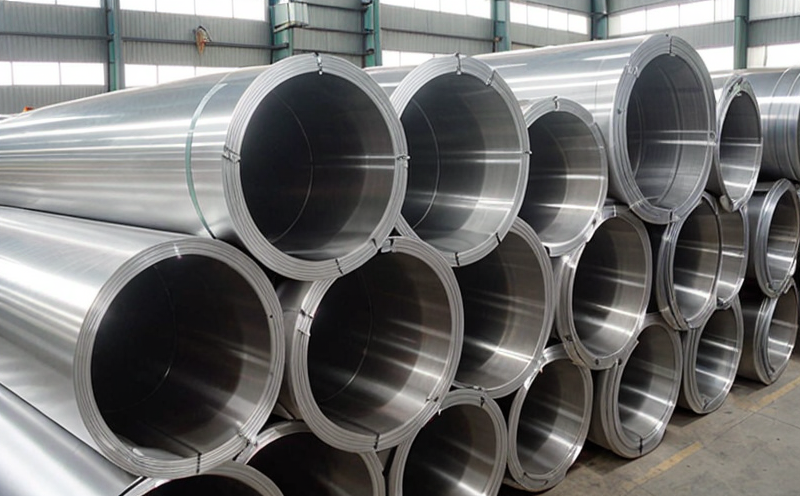ASTM G155 Xenon Arc Exposure Testing for Ship Materials
The ASTM G155 standard specifies procedures for subjecting materials to xenon arc exposure testing. This method is widely used by the marine and shipbuilding industries to simulate ultraviolet (UV) radiation, heat, and moisture effects on materials. The goal is to evaluate how well these materials can withstand environmental stresses, ensuring their durability and performance in harsh maritime environments.
In the context of ship equipment manufacturing, this testing is crucial for assessing the suitability of various components and materials used in construction. From structural elements like hull plating to electronic enclosures and insulation materials, the ASTM G155 test provides critical insights into a material’s resistance against aging caused by UV light, heat, and moisture.
The xenon arc lamp used in this testing method closely mimics the solar spectrum, including both visible and UV components. The test chamber simulates conditions that accelerate the aging process, allowing for early detection of potential issues before products are deployed on ships. This helps manufacturers identify materials prone to degradation or failure under real-world conditions.
The methodology involves exposing specimens to controlled environmental stress factors over a specified duration. Specimens are typically exposed in a closed chamber illuminated by xenon arc lamps that emit broad-spectrum ultraviolet light, visible light, and infrared radiation. The exposure can be adjusted for different durations based on the specific requirements of the material being tested.
During testing, the specimen is placed inside the test chamber where it undergoes accelerated aging under conditions designed to replicate real-world environmental stressors. This includes high temperatures, humidity cycles, and ultraviolet light exposure. The intensity and duration of these factors can be customized according to specific material properties or industry standards like ASTM G155.
The specimens are carefully prepared before testing by cutting them into standard sizes and shapes, ensuring they meet the requirements set forth in ASTM G155. After exposure, the specimens undergo thorough evaluation to assess changes due to UV light, heat, and moisture. Key parameters measured include color change, loss of gloss, cracking, and other visible signs of degradation.
Testing under these controlled conditions provides valuable data on material performance, helping manufacturers make informed decisions about which materials are most suitable for use in ship equipment. This ensures that the products used in maritime environments meet not only current but future regulatory requirements as well.
Scope and Methodology
The scope of ASTM G155 testing is broad, covering a wide range of materials commonly found in marine applications such as aluminum alloys. This test simulates the effects of UV radiation, heat, and humidity to evaluate material resistance to aging and degradation over time. The procedure involves exposing samples to high-intensity xenon arc lamps that reproduce the entire solar spectrum.
The methodology for ASTM G155 testing includes several key steps designed to replicate real-world environmental conditions in a controlled laboratory setting. These steps are outlined below:
- Sample Preparation: Samples must be prepared according to the specified dimensions and surface finish requirements as per the test standard.
- Environment Setup: The testing chamber is set up to maintain specific temperature, humidity levels, and UV intensity.
- Exposure Period: Specimens are exposed to xenon arc radiation for a predetermined period that can vary depending on the material being tested.
- Evaluation: After exposure, samples are inspected visually or through more sophisticated analytical techniques to determine any changes in appearance and structural integrity.
The results obtained from this testing provide crucial information regarding the durability of materials against environmental factors. This helps manufacturers choose appropriate materials that can withstand harsh marine conditions effectively.
Eurolab Advantages
At Eurolab, our commitment to excellence in testing and certification ensures that we deliver accurate results for ASTM G155 xenon arc exposure tests. Our state-of-the-art facilities are equipped with the latest technology to provide reliable test results, ensuring compliance with international standards.
We offer a comprehensive range of services tailored specifically towards ship materials evaluation, including:
- Comprehensive testing solutions for various types of metals and alloys used in marine applications.
- Dedicated expertise and experience working within the marine sector, providing deep understanding of unique challenges faced by this industry.
- Access to cutting-edge equipment that allows us to conduct precise and reproducible tests.
Our team of skilled professionals ensures every aspect of your project receives meticulous attention from initial consultation through final report delivery. We pride ourselves on maintaining high standards while offering personalized service designed around your specific needs.





